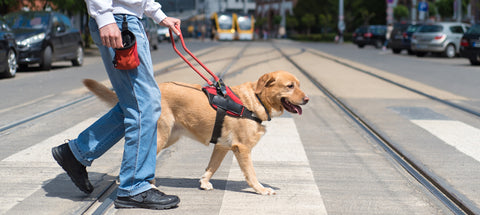As temperatures soar in summer months, so does our body temperature. Dogs don’t tolerate high temperatures as well as humans. With sweat glands only in their feet and around their nose, dogs are less efficient at cooling themselves down than we are. Sadly, this makes them more susceptible to heat stroke.
Heat stroke happens when your pet is too hot and is unable to reduce their body temperature to cool themselves down. Heat stroke can kill, so it’s important to act fast if your dog is displaying any signs of heat stroke. In this guide, we explain what heat stroke is, signs of heat stroke in dogs and what to do if you think your pet is suffering from heat stroke.

What is heat stroke?
Heat exhaustion occurs when the body gets too hot and can result in a fever or even unconsciousness. Whilst heat exhaustion can happen to anyone subjected to high temperatures, especially when working or exercising, it isn’t always serious. However, if this continues for longer than 30 minutes and turns into heat stroke then this can be life threatening. Heat stroke is caused when the body is exposed to excessively high temperatures and is unable to regulate temperature (cool itself down) properly. Generally, if a pet's body temperature exceeds 39.4°C, it is considered abnormal or hyperthermic.Heat stroke in dogs
Just like humans, dogs can suffer from heat exhaustion and heat stroke.There are two types of heat stroke — exertional and non-exertional.
Exertional heat stroke is caused by an increase in the body’s temperature during intense physical activity and is more likely to occur during hot weather conditions when dogs haven’t had a chance to acclimatise to the sudden change in temperature.
Non-exertional heat stroke occurs when a dog is exposed to high temperatures and does not have access to proper ventilation or drinking water and so are unable to keep themselves cool. This type of heat stroke typically occurs in a yard with no shade, in rooms without ventilation or in a parked car.

Signs of heat stroke in dogs
Although any dog - or human for that matter - is vulnerable to heat stroke, there are some breeds of dogs which are more prone to heat exhaustion and heat stroke. According to the RSPCA, Aging dogs or very young pups, dogs with thick, heavy coats and dogs with flat faces are breeds which are more susceptible to heat stroke.If your dog is displaying any of these behaviors or symptoms then they could be suffering from heat stroke:
- Barking, whining or signs of agitation
- Dehydration
- Excessive drooling
- Faster, heavier panting
- Glazed-over eyes
- Increase in body temperature
- Increased pulse and heartbeat
- Seizures
- Staggering, weakness or collapse
- Unconsciousness
What to do if your pet is suffering from heat stroke
Heat stroke can kill, so it’s important to act fast if your dog is displaying any signs of heat stroke. If your pooch is displaying any signs of heat stroke, you should:- Move them into a shaded or cool area immediately
- Cover them with cool water
- Try to position wet towels beneath them if possible, to speed up the cooling down process
- Encourage your dog to drink small amounts of water
- Take your dog to the nearest vet as a matter of urgency once their temperature has regulated
Remember, your dog cannot tell you what’s wrong, so you will need to pay attention and recognise what is normal behavior for your pet. For more pet health tips, or for guidance on how to administer pet first aid, check out our health guides.










